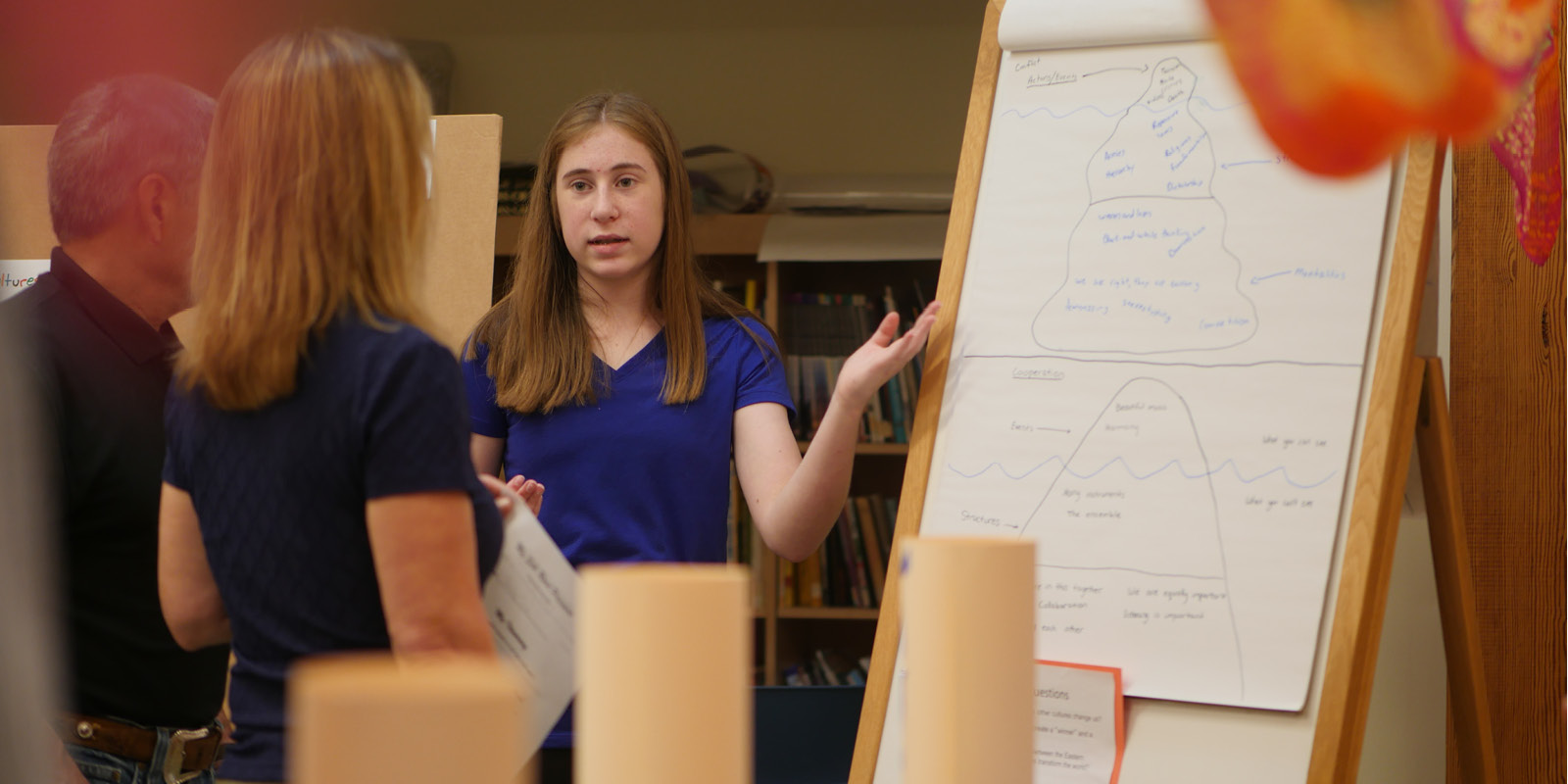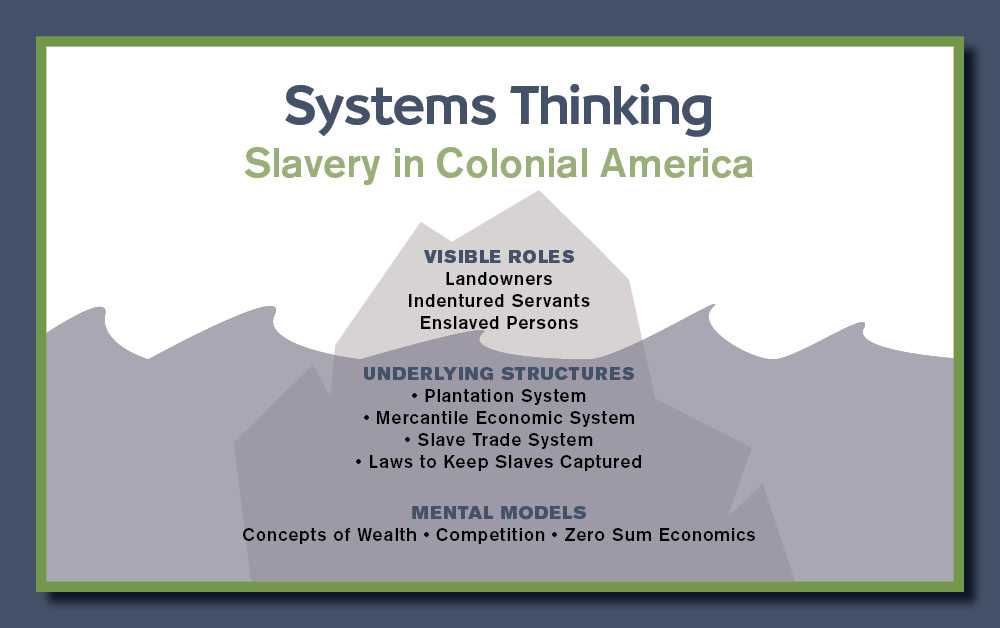How Systems Thinking deepens students’ understanding of slavery in Colonial America
When the average middle school student studies the origins of slavery in Colonial America, they may establish a timeline of important events, research the historical significance of the triangular trade system, and read firsthand accounts of enslaved African Americans. Willow’s Grade 8 students add Systems Thinking to their analysis and understanding of this critical topic, which leads them to a deeper understanding of the role slavery played in the development of the United States.
“Systems Thinking not only helps students identify the various forces that created racial slavery as an institution, but also how these forces connected with one another and reinforced each other over time,” said Middle School Social Studies Teacher Liliana Lisbao. “By using the iceberg model, a visual systems thinking tool, students can see what is below the surface of an event and where the leverage points are for someone who wants to create positive change.”
The iceberg chart exercise begins with students discussing and lists the visible aspects of colonial society at the top of the chart: landowners, indentured servants, and enslaved persons. This is what lies “above the water line” – and often, it’s where students’ understanding of historical events ends. But not at Willow. The iceberg exercise challenges students to then examine the systems and structures that facilitated slavery; what lies below the surface. Students discussed and listed the plantation system, the mercantile economic system, the system of laws that kept enslaved persons captive for life, and the transatlantic slave trade system. The class also used behavior over time graphs, another Systems Thinking tool, to better understand how the structures interacted with each other and strengthened each other over time.
Eighth graders then delved even deeper into the type of thinking that generated these systems in the first place, from the concept of wealth as money and property versus the well-being of the community to seeing competition as a necessity for success and the ideas that there must be winners and losers in a cultural exchange. These ways of thinking (and many more) helped create the systems that made slavery an institution in 17th and 18th century America.
Get our FREE guide, Systems Thinking: The Essential Academic School Every Student Needs, Yet Few Schools Teach. We will email it to you immediately!
Willow’s Grade 8 students are equipped to conduct this kind of complex analysis because they have engaged with Systems Thinking beginning in lower school. The Grade 5 study of the Agricultural Revolution, for instance, tasked students with formulating a sustainable solution that would lessen the revolution’s impact on the environment. In an environmental study in Grade 6, Systems Thinking helped students consider the issue of a polluted river more fully. The use of the iceberg chart and other tools led students to the reasoned conclusion that it was fruitless to clean up pollution downstream unless the root causes occurring upstream are effectively addressed.
At Willow, this type of thinking begins in kindergarten, when students are first introduced to the concept of a system: their classroom. Students are taught to step back, see the bigger picture, and understand how they can make a difference using Systems Thinking, even at this young age.
Ms. Lisbao noted that when students learn to apply Systems Thinking, they build a lifelong ability that will help them understand and navigate a complex world. “Training in systems thinking helps students learn to automatically analyze situations in the context of all the systems that are involved in producing an event,” she added. “It reveals the complexity of the real world and, at the same time. empowers them as problem solvers by showing them where and how they can intervene in a system to achieve positive change.”
See Systems Thinking in action! Take a tour of Willow. Click here to request a tour online.


